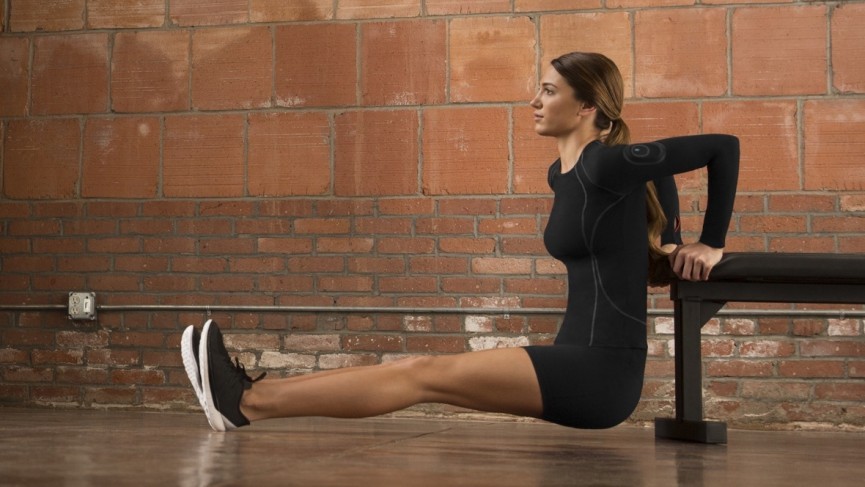A lot of industries are disrupted by new companies, products and services. Some of the most well-known examples are Airbnb and the hotel industry, Uber versus taxi companies and Netflix as opposed to video rental businesses. However, are industries are experiencing this as well. One example of this is the sports and health industry. It is a bit different from the examples above, because there is not one company which is disrupting of taking over the entire industry, but there certainly is a shift here.
Apps
This was first caused by for example food, health and sports apps, which help you track your calorie intake and macro-nutrients, give insight in your sleep cycle, count your steps, plan your workout and check your progress. Examples of these apps are Runtastic, Endomondo, MyFitnessPal, GoogleFit and Apple Health. These apps can also be connected with wearables, like the Apple Watch Sport and Fitbit. However, one of the newest technologies in the sports and health department is another type of wearables: clothes! Not normal ones, but smart clothing!
Smart clothing
A lot of companies are developing smart clothing, which will help you track a whole lot of things. Not only can these track the things your smartwatch can, like measure your heart rate and count your steps, these clothes can do much more. For example, a shirt that measures your body temperature, workout intensity, recovery, fatigue levels, but also air quality and UV levels. Or running shorts that can not only count steps, but also include cadence, ground contact time, pelvic rotation and stride length. This can help you improve your running form and reduces the chances of injury. There are also shirts that detect which of your muscles are working and transfer this workout data to a smartphone, to see if you are favoring one side over the other and if you activate the right muscles with your exercises. There are even yoga pants which pulse at the hips, knees and ankles to encourage you to move and/or hold positions and give you additional feedback through the app afterwards. With all these metrics, who still needs a personal trainer?
Sources:
https://www.digitaltrends.com/health-fitness/athos-smart-clothes/
https://www.wareable.com/smart-clothing/best-smart-clothing
https://www.digitaltrends.com/wearables/smart-clothing-is-the-future-of-wearables/


While I am intrigued with the development of the smart clothing, I think it may be a little naive to say that it negates the usefulness of personal trainers. Smart clothing may help you track calorie burn, heart rate, steps, etc., but the clothing does not teach you proper exercise form (dependent on the exercise and/or sport you do), or help push you forward. To me, a large function of the personal trainer as well is the personal element they bring to exercise- pushing you to keep running, go a little further, help you believe in yourself when you just want to give up. Smart clothing, as far as I am aware, does not provide that emotional support element when working towards fitness.
Hi Jojanneke, your article opens up an interesting topic that has concerned Western society more and more lately with the increased awareness for a healthier lifestyle.
It comes with no surprise that the smart clothing market is forecasted to surpass USD 4 billion in the next 6-7 years(Thakkar, 2017). In my opinion, this will be a welcomed innovation especially in the case of high profile athletes (early adopters), since it will reduce the need of wearing several devices (activity monitors, heartrate monitors etc) when working out. It will also decrease the risk of injury thanks to all the imbedded sensors. Looking further, the military and health sectors could be two more segments where smart clothing will definitely have a say as remote monitoring of users is only one of the advantages.
However, despite the promising prospects of e-textiles, common barriers to adoption could occur in this case. Privacy concerns might arise if data is poorly protected, especially in the sensitive case of doctor-patient relationship. Moreover, relying heavily on the data provided through the e-textiles sensors might put some parties involved at the risk of liability. If the device did not spot a bad posture in the athlete and he/she got injured, who is there to blame?
I am looking forward to seeing how the human-computer interaction will change once smart clothing get more traction on the market and are adopted by the mainstream audience.
Thanks for your article!
Sources:
Hanuska et al., “Smart Clothing Market Analysis”, University of Berkley California, accessed online at http://scet.berkeley.edu/wp-content/uploads/Smart-Clothing-Market-Analysis-Report.pdf
Thakkar, (2017), “Smart Clothing Market Forecast to 2024 Reveals 50% CAGR Growth”, Military Technologies, accessed online at http://www.military-technologies.net/2017/10/03/smart-clothing-market-forecast-to-2024-reveals-50-cagr-growth/